Microinjection Services
Interested parties can contact assistant core director to discuss preliminary approach of intended creation of a mouse model. Primary requirement to generate a mouse model at BCH using mouse core services is the PI must have an approved IACUC and IBC protocol for the desired model. After approval is granted the mouse core will co-ordinate with PI or lab member to submit request form and provide required reagents before scheduling an experiment.
Requirements
- Approved IACUC and IBC protocol for the desired mouse model.
- Submit electronic request form (eForm) for services signed by PI and designated lab member.
- Mouse core will co-ordinate with PI or lab member to collect required reagents before scheduling an experiment.
- A fund number or purchase order number to reimburse fees for requested services.
Do you have a question?
Current Services
Mouse genome is edited by using CRISPR/Cas9 reagents. User may choose to design guide RNA, donor template/s or use commercial services. We highly recommend using synthetic guide RNA, PAGE purified single strand oligonucleotide donor/s and Cas9 protein. Additionally if double strand donor construct is to be used as a donor template, then DNA must be purified as described below. Typically 2-3 gRNAs are recommended per target site due to variable cleavage efficiency of gRNA in vivo.
Pronuclear Injection Service
- Base editing and Prime editing
- Replacement of mouse gene by human gene (Humanized mouse model)
Gene Editing
- CRISPR/Cas9 reagents into fertilized embryos to generate founder
- single or multiple gene knockout
- loxp or frt floxed allele using single strand oligo donor nucleotide (ssODN)
- introduce specific point mutation using ssODN
- reporter mice using ds-Donor constructs
- gene targeted founders using ds-Donor constructs
- reporter knock-in into ROSA26 locus
- in vivo Electroporation (iGONAD)
- CRISPR/Cas9 reagents to create gene knock-out and knock-in (<200nt donor)
Transgenic
- Transgenic DNA constructs into pronuclei of fertilized embryos (B6, F1, FVB or mutant strains)
- Transgenic BAC DNA constructs into pronuclei of fertilized embryo
Microinjection Service
Blastocyst injection
- Gene targeted ES cells introduced into the host blastocysts to generate chimeric mice
- Wild type or reporter ES cells introduced into mutant blastocysts to generate chimeric mice
- Imported ES cell lines from KOMP/EUCOMM/IMMRC
- Mouse induced pluripotent stem cells (iPSC) introduced into blastocysts


